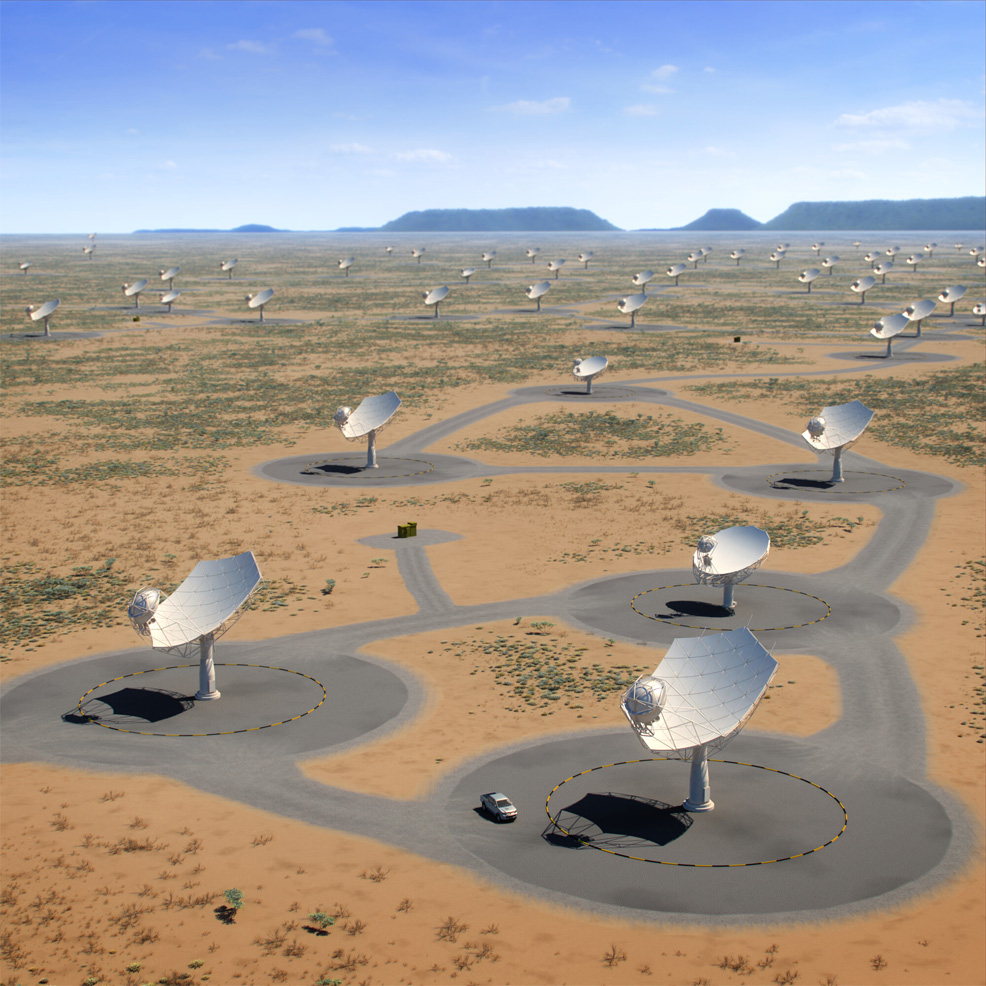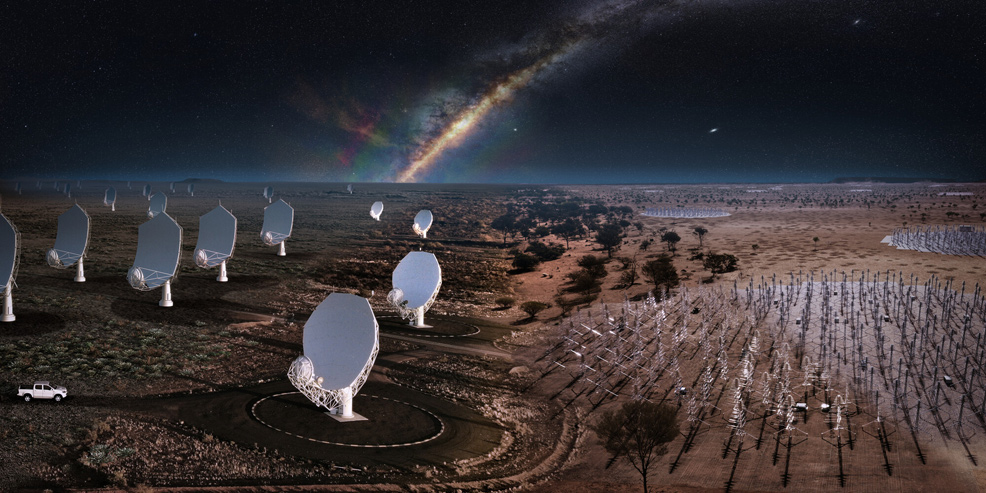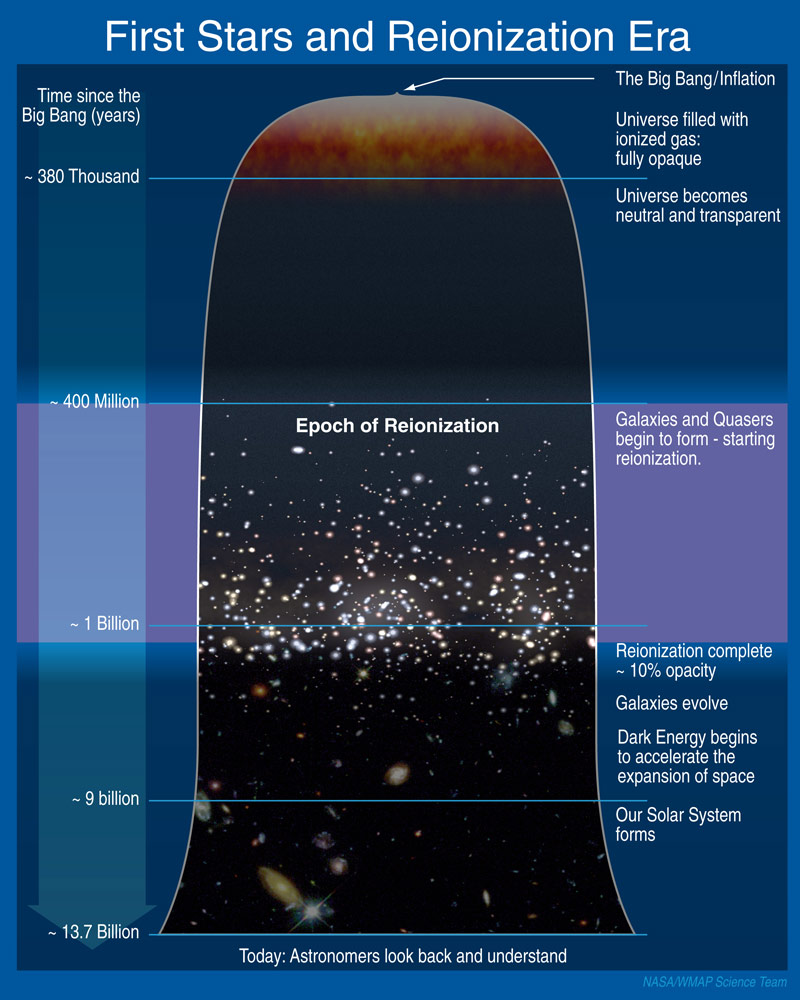
4th July 2021 Construction begins on the Square Kilometre Array This week, construction officially began on the Square Kilometre Array – set to become the largest and most sensitive radio telescope ever built – with first light scheduled for 2027.
The Square Kilometre Array (SKA) has been in planning for 30 years. In 1991, renowned Indian astronomer Govind Swarup published his design for an International Radio Astronomy telescope (ITRA) which included 160 dishes of 75 m (246 ft) in diameter. This later evolved into the SKA, with an international working group set up in 1993 and the first Memorandum of Agreement signed in 2000. The technical capabilities of radio telescopes had been improving exponentially since the early 20th century. While major new observatories had emerged in the 1980s and 1990s, astronomers knew that even bigger projects would be needed to sustain that trend. The proposal for a truly next-generation facility gathered momentum among the scientific community, with a goal of enabling orders-of-magnitude gains in telescopic power. By 2006, a number of candidate sites had been nominated around the world. The SKA Organisation became established as a legal entity in 2011. A major project milestone occurred in 2012, with selection of both the final design and the locations for the SKA. This allowed more detailed work to proceed for the many technical components, alongside the assessment of their costs. Following another decade of progress – which saw funding secured, and the demonstration of station prototypes – the SKA Organisation this week announced that construction of the array has now officially begun. As seen in the composite image below, the SKA actually consists of two telescopes: 197 dishes in South Africa and 131,000 antennas in Western Australia, combining to form a total collecting area of 1 km² (11,000,000 sq ft). Placed in remote regions, away from light pollution or radio interference, this vast network will benefit from some of the world's clearest night skies.
The area covered by the SKA, extending out to 3,000 km, will provide continuous 24/7 monitoring from 50 MHz to 24 GHz. South Africa's Karoo desert will cover the core of the high and mid frequencies of the radio spectrum, with 150 km between the two most distant dishes. Meanwhile, the Murchison region of Australia will cover the low frequency range. This configuration – spreading thousands of stations over thousands of kilometres – will enable very fine resolution imaging, revealing the Universe in more detail than ever seen before. It will feature 50 times the sensitivity and 10,000 times the surveying speed of current-generation telescopes. The SKA is designed to address a wide range of questions in astrophysics, cosmology, fundamental physics and particle astrophysics, as well as extending the range of the observable Universe. For instance, it will provide data from between the so-called Dark Ages (just 380,000 years after the Big Bang) and the time of First Light (up to a billion years after the Big Bang, when young galaxies formed for the first time and hydrogen became reionized). By observing the primordial distribution of gas, the SKA should be able to see how our Universe gradually lit up. The extreme sensitivity of the SKA will enable a billion galaxies to be mapped, to the very edge of the observable Universe. The large-scale structure of the cosmos that is revealed will give constraints to determine the processes resulting in galaxy formation and evolution. Precise imaging of hydrogen throughout the Universe will provide a three-dimensional picture of the first ripples of structure that formed individual galaxies and clusters. This may also allow the measurement of effects hypothetically caused by dark energy, believed to be increasing the rate of expansion in our Universe. In addition to its large-scale observations, the SKA will investigate planets and stars. For example, it will probe the habitable zone of Sun-like protostars where Earth-like planets or moons are most likely to have environments favourable for the development of life. Astrobiologists will also use the SKA to search for complex organic compounds (containing carbon) in outer space, including amino acids, by identifying spectral lines at specific frequencies. According to those working on the SKA, extremely weak radio emission "leakage" from extraterrestrial civilisations might also be detected, if they exist.
Founding members of the SKA include Australia, China, Italy, the Netherlands, Portugal, South Africa and the United Kingdom. A further nine countries are observers in the SKA Council – Canada, France, Germany, India, Japan, South Korea, Spain, Sweden and Switzerland. More than 1,000 scientists developed the proposal for the telescope, which has a total cost of €2bn ($2.4bn), while 500 engineers from 100 institutions have worked on its design. "I am ecstatic. This moment has been 30 years in the making," said Professor Philip Diamond, Director-General of the SKA Organisation, during the official launch this week. "Today, humankind is taking another giant leap by committing to build what will be the largest science facility of its kind on the planet – not just one but the two largest and most complex radio telescope networks, designed to unlock some of the most fascinating secrets of our Universe. "I'd like to thank everyone who has contributed to making this possible over the past decades, from the early inception of the project until now, and in particular all the teams who have worked so hard over recent years and powered on through a pandemic in very difficult circumstances to meet deadlines and make this milestone possible. I would also like to thank our Member States for their vision and the trust they're placing in us by investing in large-scale, long-term research infrastructure at a time when public finances are under intense pressure." In addition to delivering new and potentially revolutionary science, the construction of the Square Kilometre Array will produce tangible societal and economic benefits for countries involved in the project – through direct and indirect economic returns from innovation and technological spin-offs, new high-tech jobs and boosted industrial capacity. If the project remains on schedule, then "first light" can be expected in 2027. When fully operational in 2030, the SKA will collect more than 700 petabytes (PB) of science data per year. To put this in perspective, that is greater than the entire world's Internet traffic in 2013. The SKA is expected to remain working until at least the year 2080.
Comments »
If you enjoyed this article, please consider sharing it:
|









